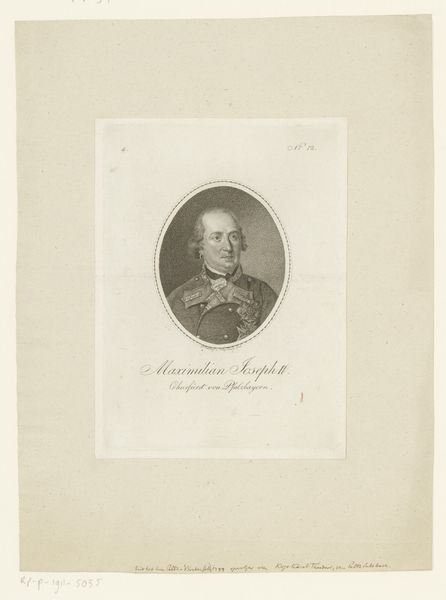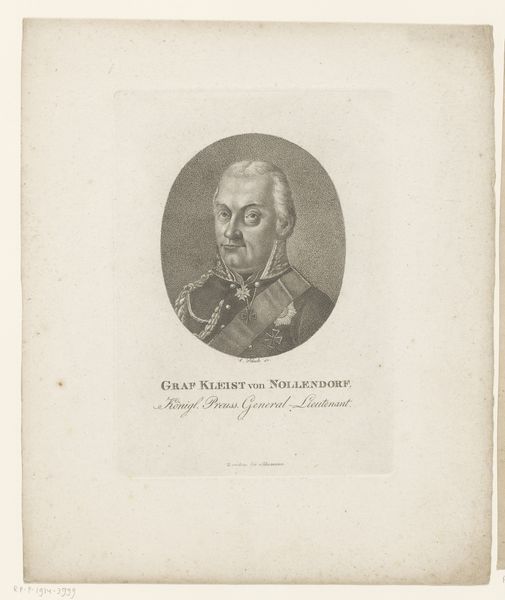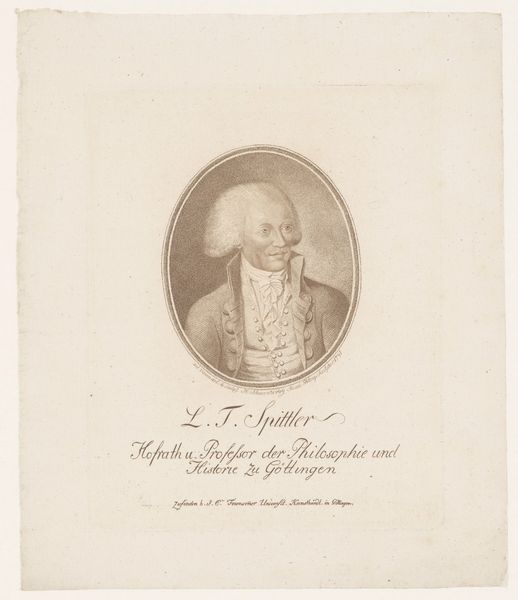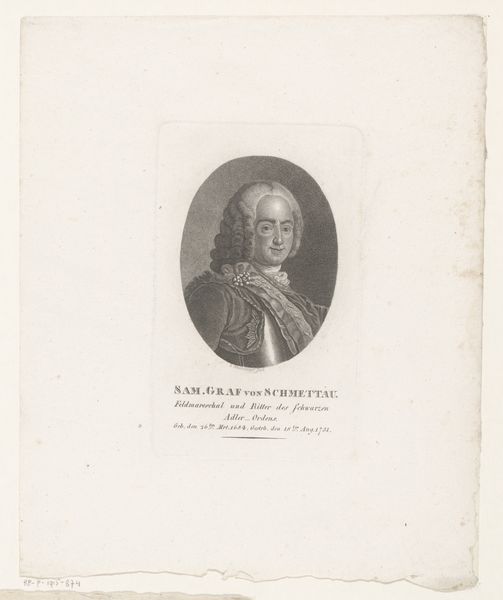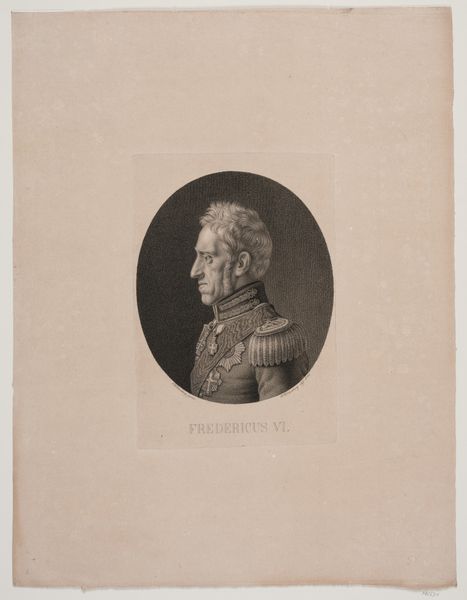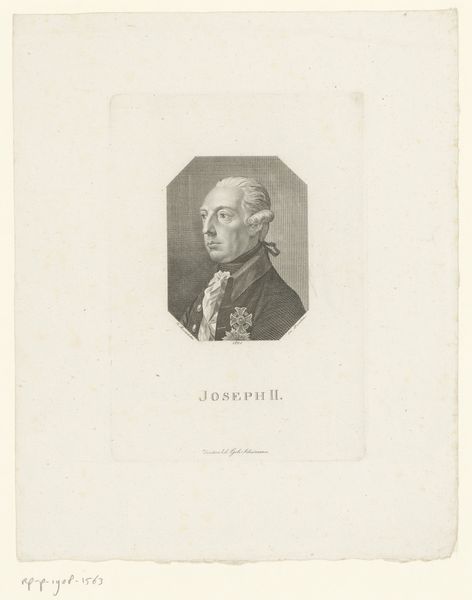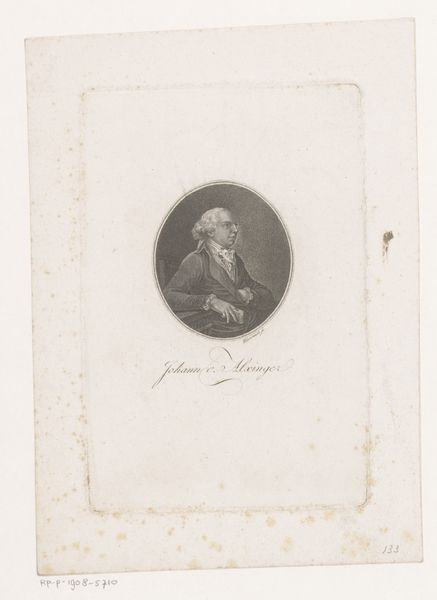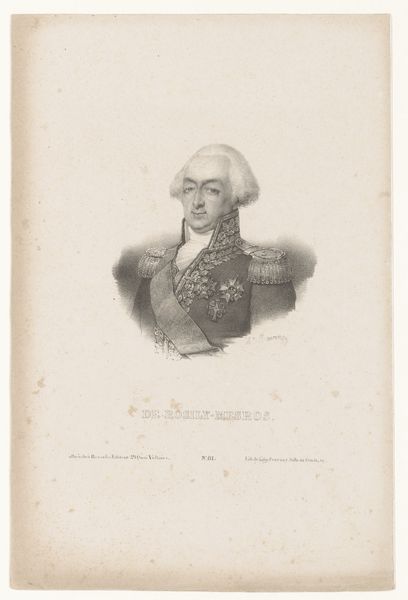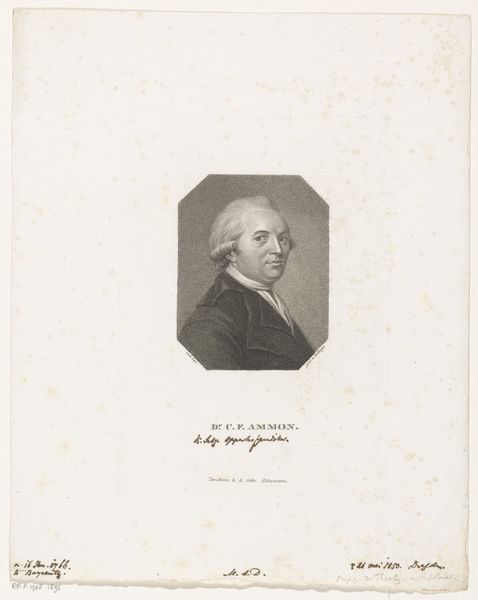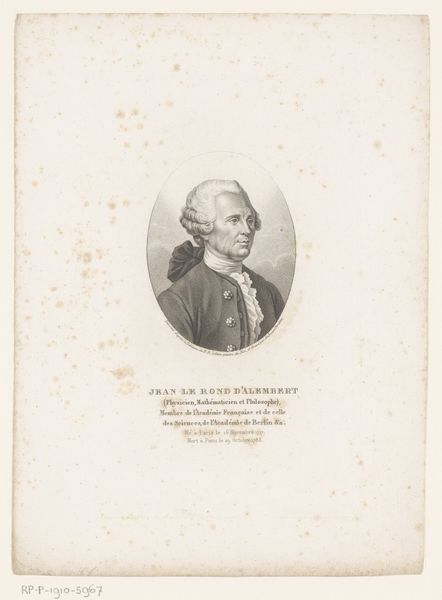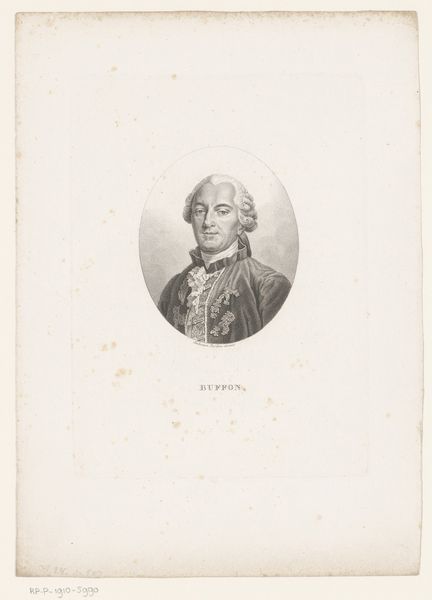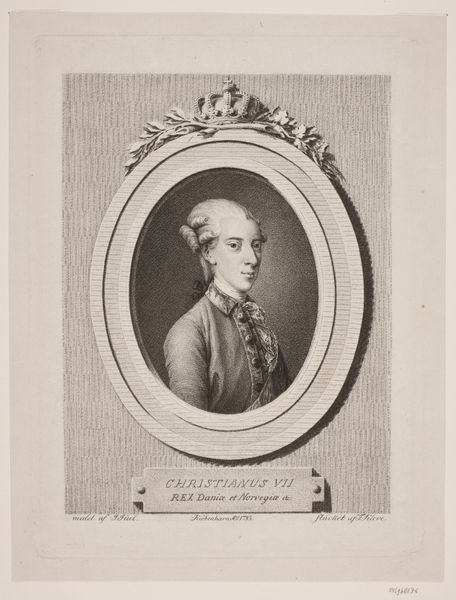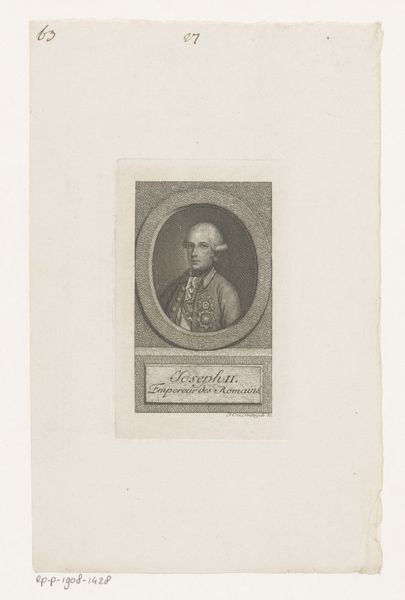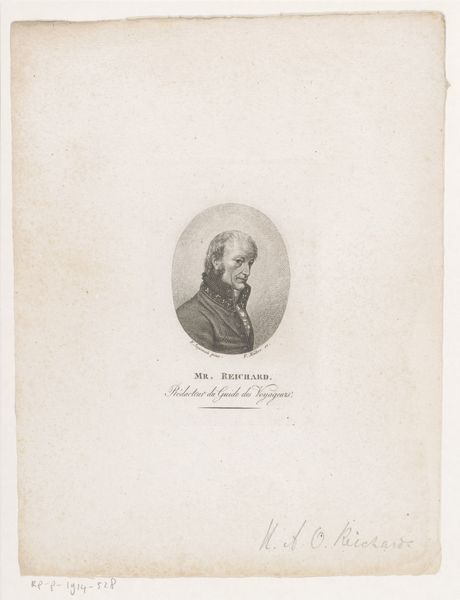
print, engraving
#
neoclacissism
# print
#
history-painting
#
engraving
#
realism
Dimensions: height 182 mm, width 130 mm
Copyright: Rijks Museum: Open Domain
Curator: Here we have "Portret van Frederik de Grote," or "Portrait of Frederick the Great," an engraving created sometime between 1802 and 1843 by Johann Carl Bock, currently held at the Rijksmuseum. Editor: The first thing that strikes me is the formality, even austerity, of this print. The crisp lines and tight oval frame create a sense of controlled power, almost a removed stoicism. It's definitely conveying an image of leadership, wouldn't you say? Curator: Absolutely. Considering its context, images of Frederick the Great were strategically used to solidify Prussian identity and promote political agendas long after his death in 1786. This print would have circulated amongst the growing literate public. Editor: And it's crucial to remember that these kinds of depictions often served to sanitize history, reinforcing particular narratives while obscuring more complex truths about Frederick's reign—especially related to class and military expansion. How might the visual language, like the subject's dress, contribute? Curator: Precisely. The precise engraving showcases Frederick’s recognizable military attire, emphasizing his role as a strong military leader. Notice, for example, the star-shaped medal that shines even through the tight rendering of the print. The text below—"Friedrich der Einzige"—also underscores his perceived uniqueness. Editor: Right, “Frederick the Unique.” That framing definitely speaks to the cult of personality that started to grow around him, conveniently ignoring the complexities and contradictions of the era he governed. In today's political climate, with rising nationalism across the globe, analyzing these types of idealized representations and understanding their influence is even more vital. Curator: Indeed. Understanding the mechanisms by which historical figures are elevated to iconic status offers insights into how power operates, both then and now. Editor: Looking at this work makes me question whose stories are prioritized in art history and museum spaces. It urges us to ask not just who is being celebrated but also at whose expense. Curator: A poignant reflection. This artwork reveals that depictions, though seemingly straightforward, possess profound implications about societal power and cultural narratives.
Comments
No comments
Be the first to comment and join the conversation on the ultimate creative platform.
